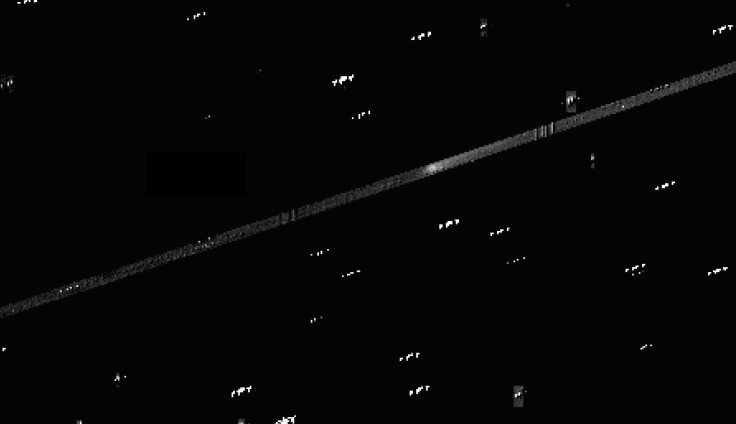‘Big Picture’ Of Comet 67P Captured Using NASA’s Kepler Space Telescope

Remember 67P/Churyumov–Gerasimenko? On Friday, NASA released a “big picture” view of the comet — now a graveyard for the European Space Agency’s Rosetta spacecraft and the Philae lander — captured by its planet-hunting Kepler Space Telescope.
The images, captured over a nearly 30-hour period between Sept. 17 and Sept. 18 — just days before Rosetta crash-landed on the comet — show 67P hurtling through space, shedding a tail of gas and dust. During this period, the comet was not visible from ground-based telescopes because its orbit placed it in the sky during daylight hours.
“From the distant vantage point of Kepler, the spacecraft could observe the comet's core and tail. The long-range global view of Kepler complements the close-in view of the Rosetta spacecraft, providing context for the high-resolution investigation Rosetta performed as it descended closer and closer to the comet,” NASA said in a statement.
In addition to providing a fresh perspective on the comet, analysis of the Kepler data would also help scientists determine the amount of mass 67P is losing each day during its 6.5-year-long orbit around the sun.
Rosetta’s two-year long mission ended on Sept. 30, when it made a controlled descent to the surface of the comet. The descent gave Rosetta an opportunity to study the comet’s gas, dust and plasma environment up close, as well as take extremely high-resolution images — information that was returned to Earth before last contact.
“As well as being a scientific and technical triumph, the amazing journey of Rosetta and its lander Philae also captured the world’s imagination, engaging new audiences far beyond the science community,” Mark McCaughrean, ESA’s senior science advisor, said last week. “It has been exciting to have everyone along for the ride.”
One of the key discoveries made by Rosetta during its mission was the detection of the amino acid glycine, commonly found in proteins, and phosphorus, a key component of DNA and cell membranes, in the coma of 67P.
A coma, whose shape and size can vary depending on the comet’s distance from the sun, is the fuzzy, nebulous envelope of dust and gas that usually surrounds a comet’s nucleus.
The presence of amino acids in the coma bolstered the possibility that the building blocks of life on Earth, and possibly elsewhere in the solar system and beyond, may have been deposited by comets.
© Copyright IBTimes 2025. All rights reserved.






















